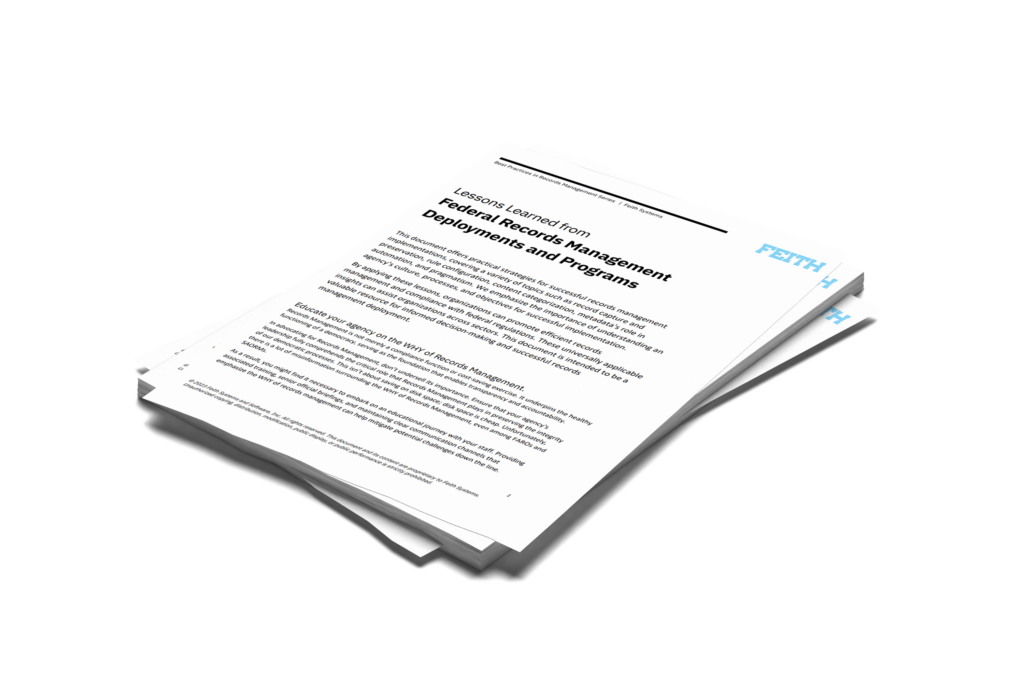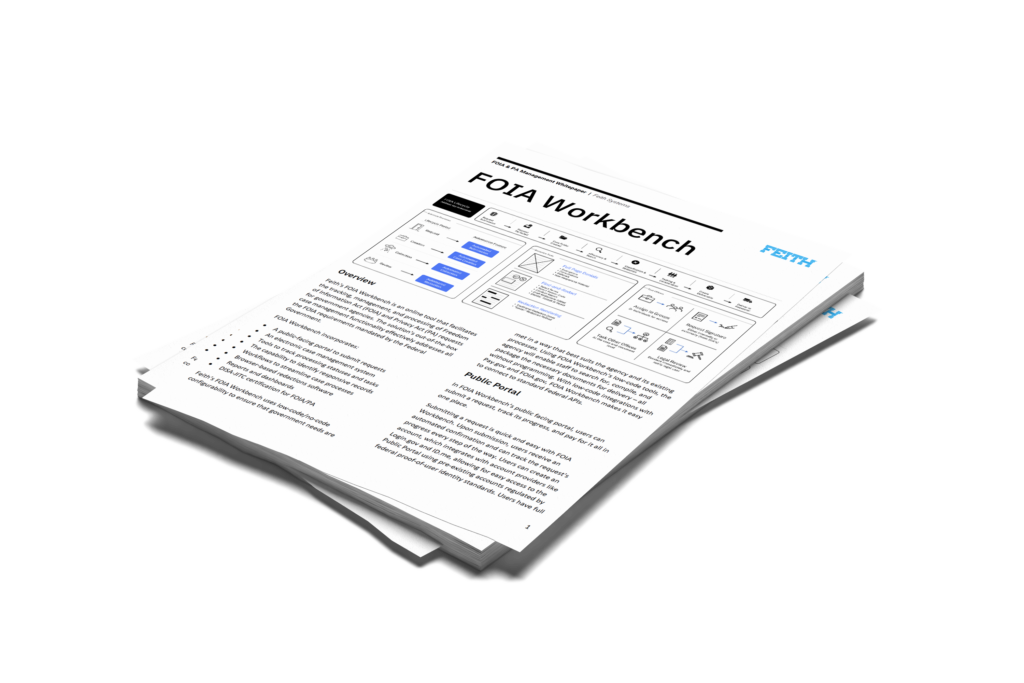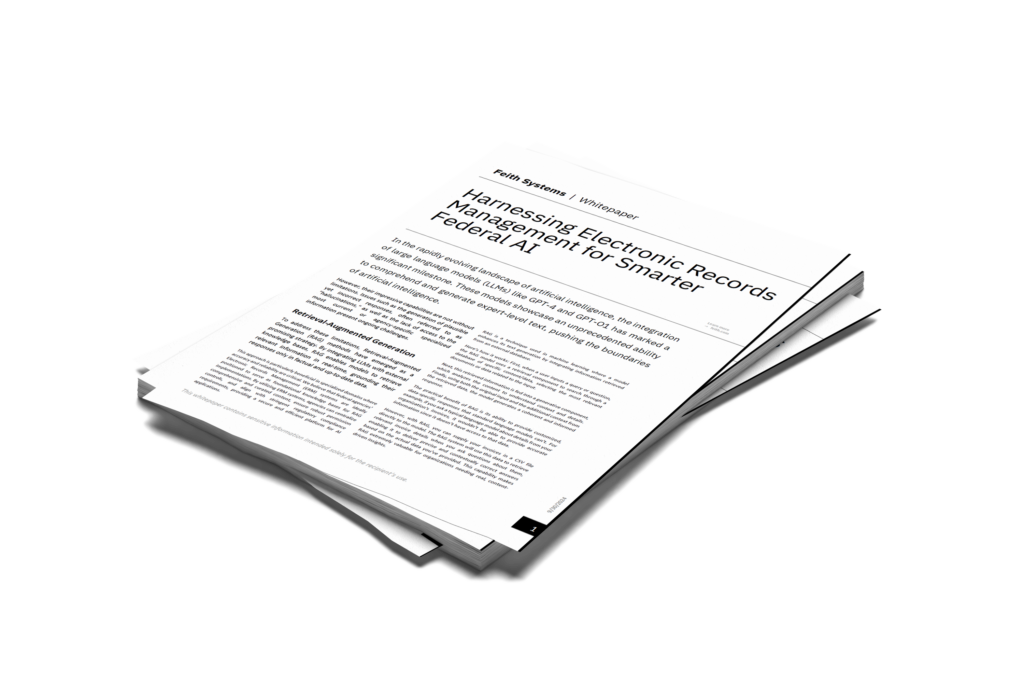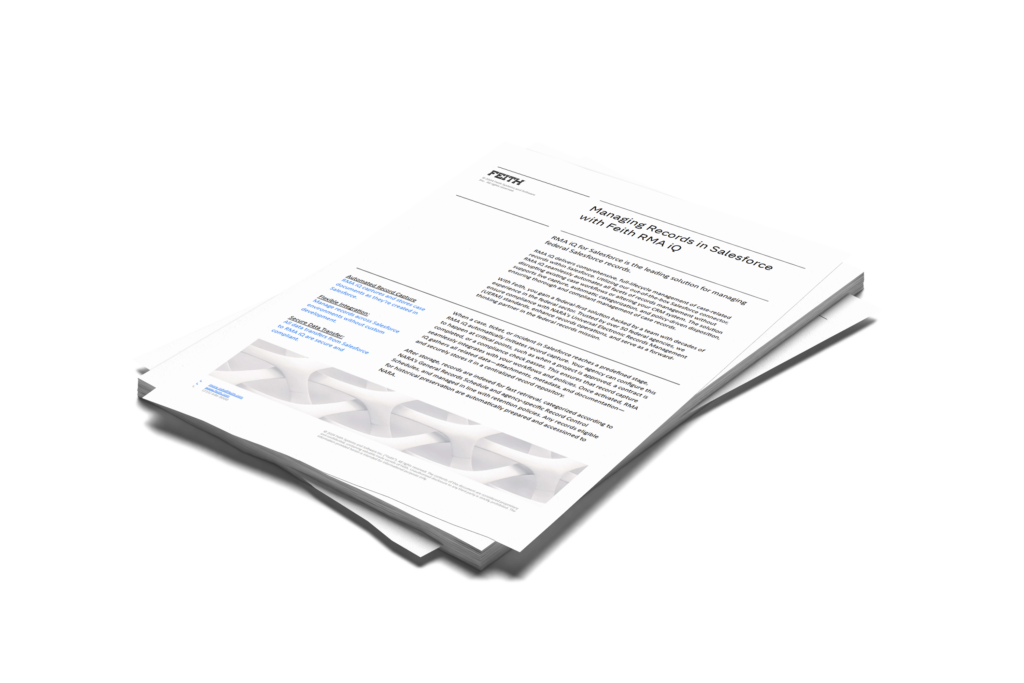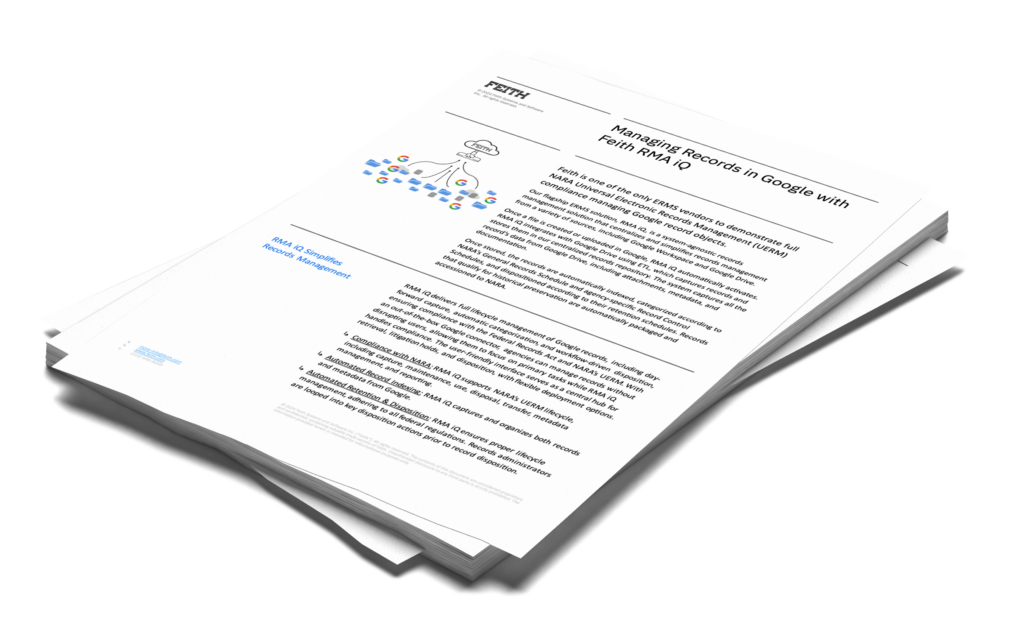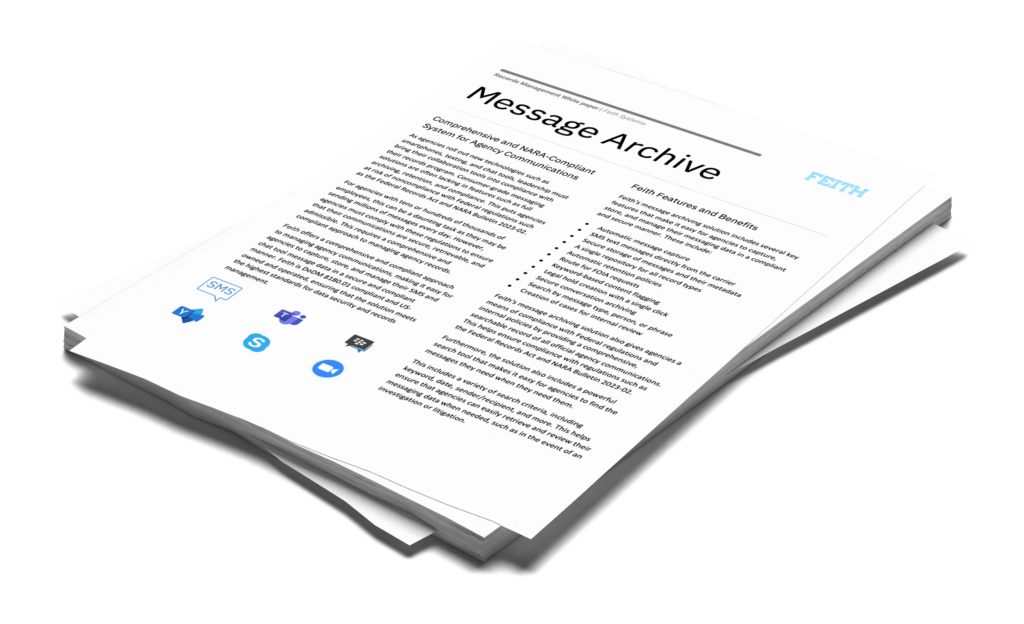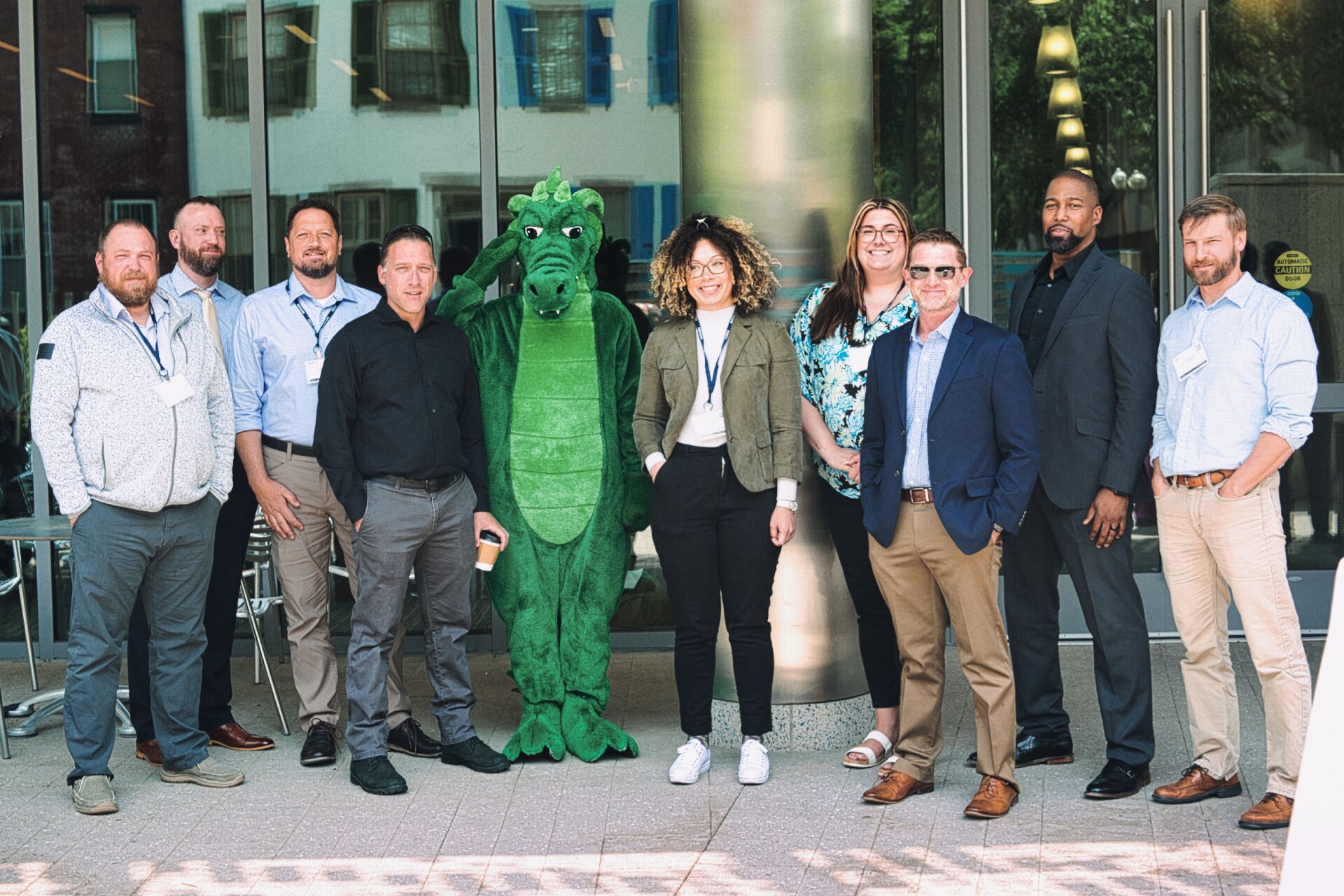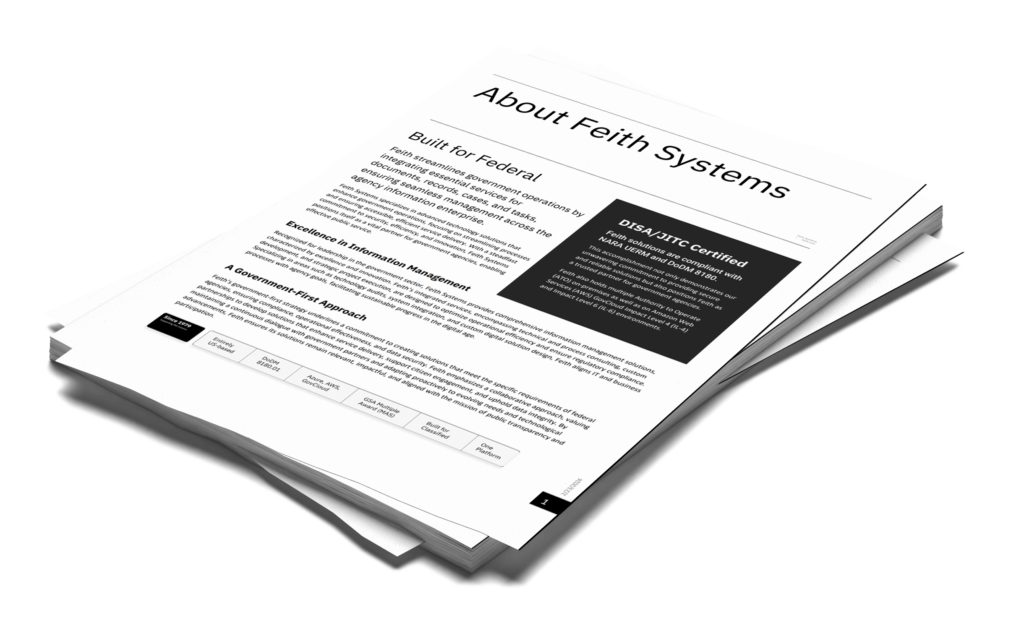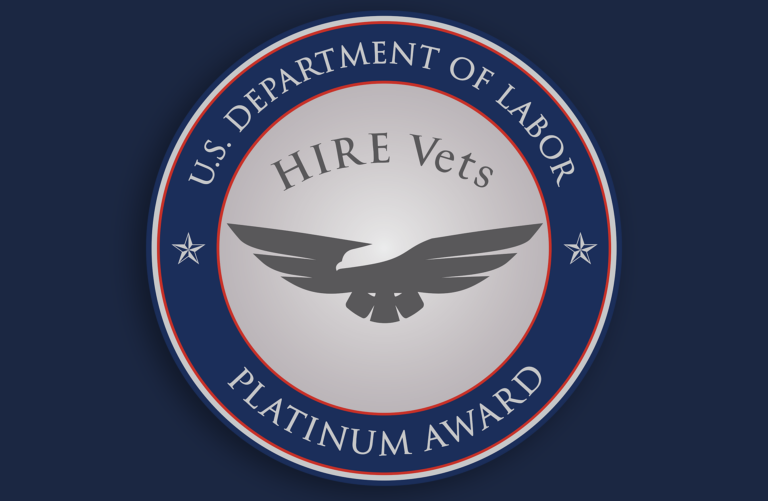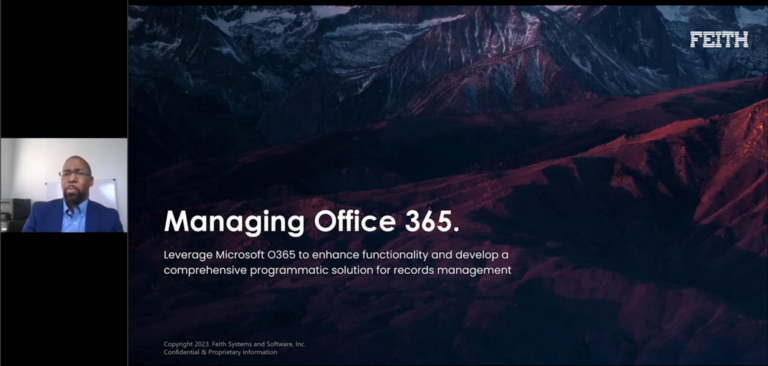# Whitepapers # RecordsManagement #Physical
Managing Physical Records in a Digital World
Discover how Feith’s Physical Records Management solution brings physical records into the digital age, offering seamless tracking, security, and compliance for government agencies.
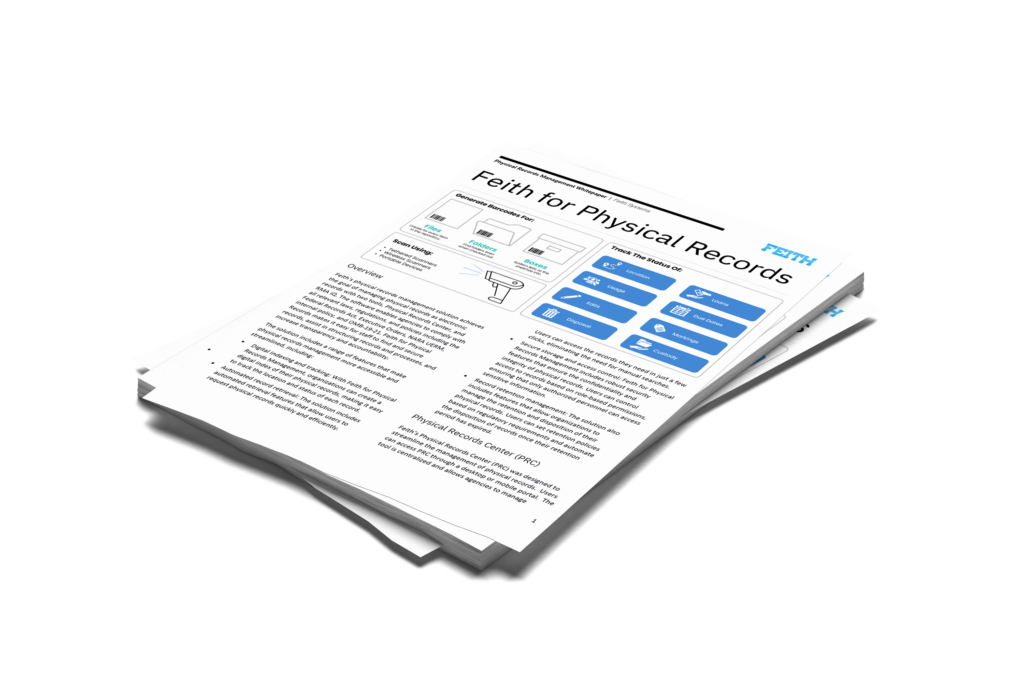
With growing demands to modernize IT infrastructure, federal agencies need effective records management (RM) technology. Feith’s RMA iQ™ is built to meet the complex needs of the U.S. Federal Government, offering a compliant, flexible, and future-ready solution.
Our white paper, Feith RMA iQ™ – The Leader in Federal Solutions, explores how RMA iQ™ streamlines records management, improves compliance, and reduces costs, all while adapting to evolving requirements.
Inside the White Paper
- Platform Overview: How RMA iQ™ integrates with existing systems and offers modular, customizable features.
- Compliance and Certifications: Why RMA iQ™ is trusted by federal agencies, including DoDM 8180.01 and NARA compliance.
- Improving Federal RM: How RMA iQ™ automates records management, enhancing compliance and supporting the transition to electronic records.
- Security and Access Controls: How RMA iQ™ protects data with Role-Based Access Control (RBAC), Multi-Factor Authentication (MFA), and integration with federal identity management.
- Document Capture and Indexing: Advanced tools for capturing and indexing records, both automatically and manually.
- Automation and Cost Savings: How RMA iQ™ reduces manual work, cuts costs, and improves operational efficiency.
This white paper provides essential insights for federal records officers, IT managers, and agency leaders looking for a comprehensive, compliant records management solution.



